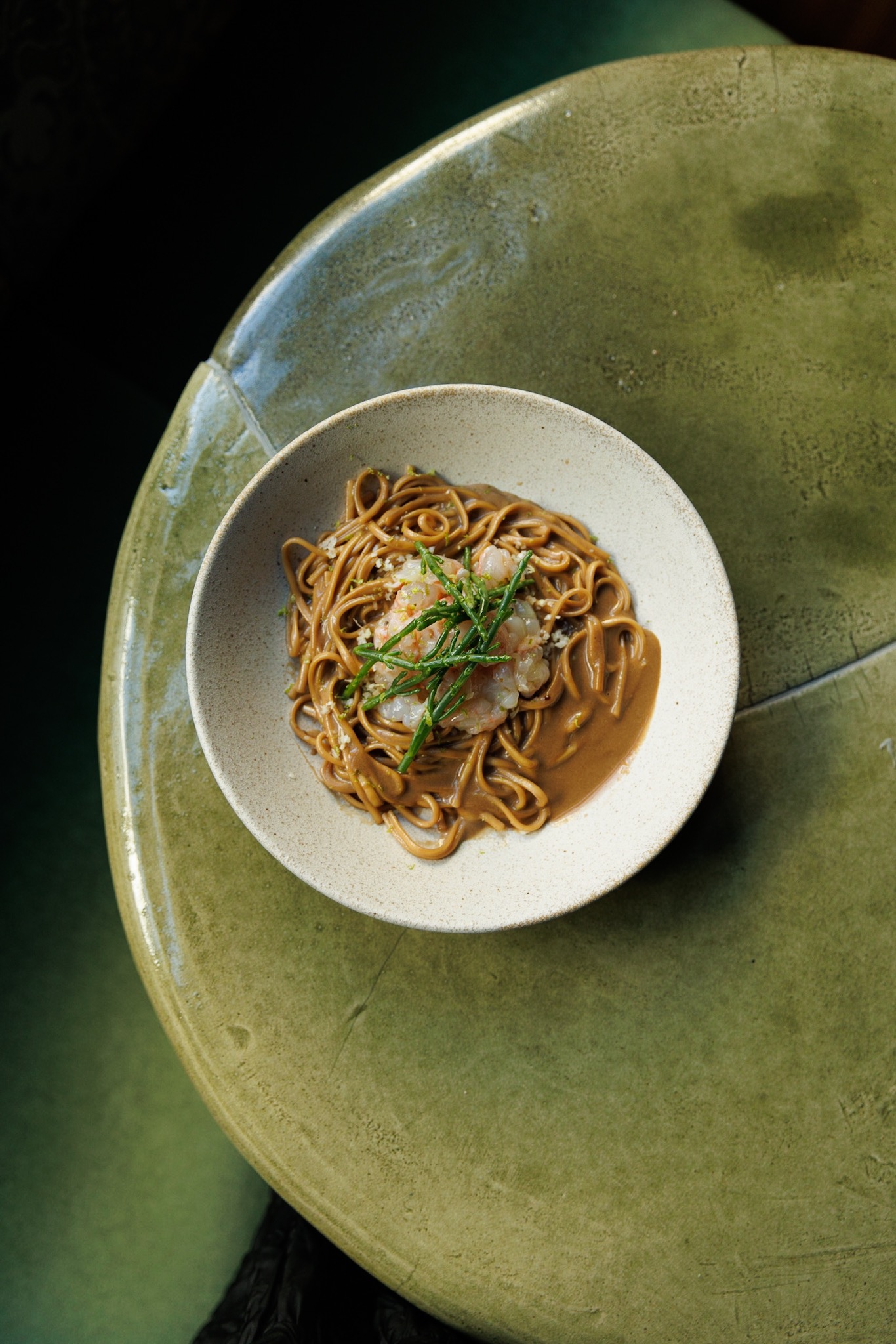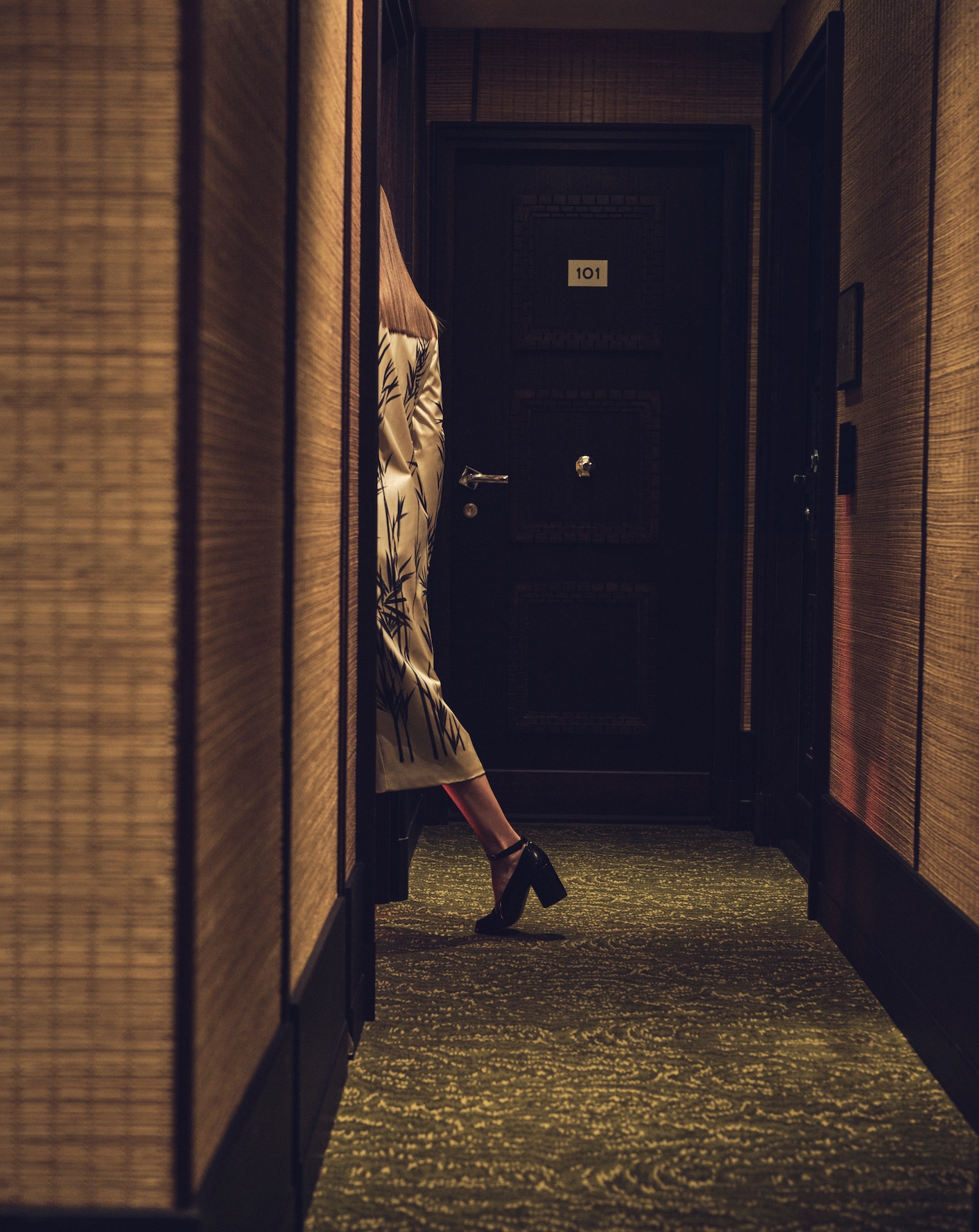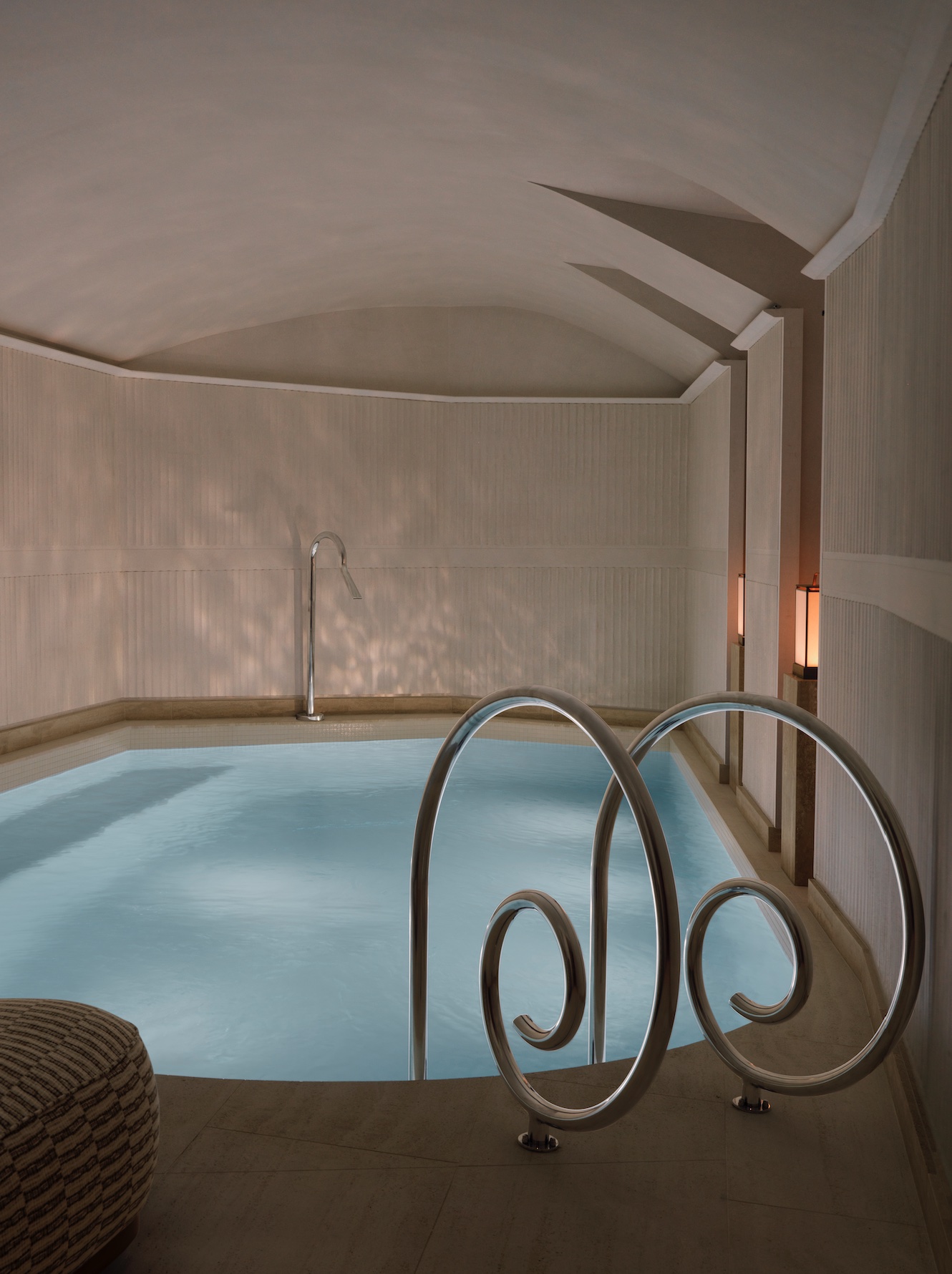
At Hotel Hana in Paris, the newest member of the Adresses Hotels collection, interior designer Laura Gonzalez used pattern, texture and craftsmanship to create the best of both worlds
Marrying Paris’ decorative Belle Époque with ultra-zen minimalism might sound like an impossible task. But here, in a former office block on La rue du Quatre-Septembre in the city’s Japanese Quarter, the aim was just that. Hotel Hana, the newest property from Adresses Hotels, is an ode to East-Asian craft wrapped up in lashings of Parisian glamour. Guests receive matcha and sesame madeleines on arrival, and rooms are dressed in fusuma panelling, lacquered wood and opulent burnt-orange velvet.
Its Haussmann-style balconies have views over the sprawling city reaching as far as the dome of Sacré-Cœur in Montmartre. But it’s the closer neighbourhood – where ramen joints jostle and Japanese supermarkets thrive – that provided the inspiration for Hotel Hana’s interiors.

The aesthetic is a polished duet between designer Laura Gonzalez and creative director Olivier Leone. Leone brings his fashion nous (he co-founded cult shoe brand Nodaleto, and lists Prada and Hong Kong film director Wong Kar-wai as influences). Gonzalez’s attention is on locality and process. She says her vision “lies in the distinctive feel of this district, nestled in the very heart of the Japanese Quarter. I was driven by the desire to highlight the importance of this culture within the French capital.
“We wanted to fuse the essence of the local neighbourhood with the atmosphere of the Parisian Belle Époque,” Gonzalez continues. “The choice of materials and colours blend Japanese culture with French elegance. This fosters an ambience of utmost tranquillity and repose. Even though the hotel sits in a busy area, stepping inside feels like entering a whole new world.”

The hotel’s 26 bedrooms (two of which are lofty, ultra-glam suites) are a testament to this. Sand-coloured tatami straw mats line the walls, white sconces resemble paper lanterns, and bolster cushions are embellished with patterns of cherry blossom. Everything is in its right place. “We followed the guidelines of Hélène Weber, a feng shui expert, to create spaces conducive to peaceful and harmonious rest,” says Gonzalez.
A bold use of materials elevates the simplicity of the rooms and communal spaces to provide serenity and comfort, from a check-in made of lava stone to the two-tone terracotta marble found in the bathrooms. “For me, it was crucial to create a warm atmosphere despite the overall minimalism,” says Gonzalez. See also the Japanese iroko wood, “with its countless golden reflections” on the bedroom wall panels.

Authentic craft methods were used to create many of the furnishings. Gonzalez worked with textiles hotshot Pierre Frey to create rugs with a swirling moiré pattern, which nod to the curvilinear forms of Art Nouveau while drawing on Japan’s iconic depictions of nature. “The lines evoke the pattern of pebbles thrown into water, creating ripples,” she says.
At the ground-floor Hanabi bar and restaurant, the menu pairs beef tartare with pickled vegetables, and an umeboshi plum replaces the olive in a dry martini. Here, tables were made using a traditional method called raku, in which ceramics are glazed at volcanic temperatures, resulting in a dull metal finish. In the spa, a ritualistic approach continues in treatments such as reiki, Chi Nei Tsang, Kobido and reflexology using green tea and yuzu-scented oils.
The pairing of French flamboyance and Japanese culture is not new. Japonisme – a term coined in the late 19th century – was used to describe the growing trend in Japanese design in Europe. But Hotel Hana’s take on it, inspired by the Little Tokyo found on its doorstep, reasserts that it’s a match well made.
Images by Robin Le Febvre, Shirley Garrier, Nathaniel Goldberg, Stephan Julliar,
Enjoyed this article? Subscribe to our weekly newsletter here

























